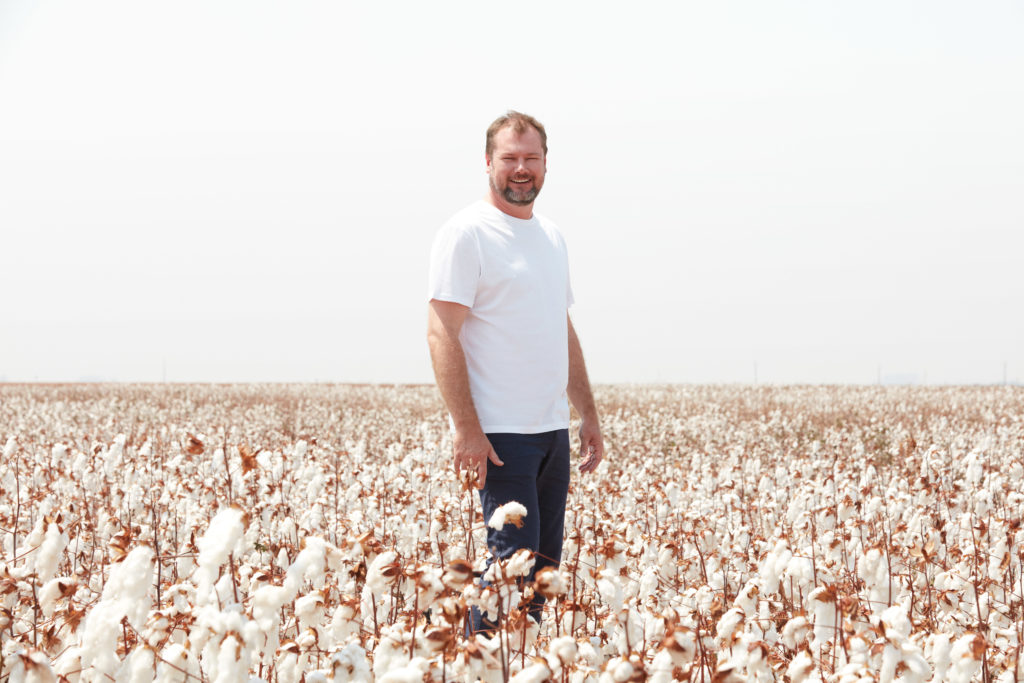São Paulo – Brazilian farmers aim to account for 20% of Egypt‘s demand for cotton imports over the next two years and are organizing to seek this share already in the first half of 2023. The goal was set by the Brazilian Cotton Growers Association (ABRAPA) as Brazilian cotton broke into the Egyptian market earlier this month after Egypt and Brazil signed a phytosanitary agreement that set the rules for Brazil to supply cotton to the Arab country.

As the doors open, the sector is set to organize some trade promotion action in Egypt in the first months of the year, ABRAPA president Alexandre Schenkel (pictured above) said. According to Schenkel, this has been done in other countries in conjunction with the Brazilian embassies and agricultural attachés, and the same will be done in Egypt. The segment wants to show the quality of Brazilian cotton, the traceability of the production and the reliability of supply.
Egypt is a major cotton producer, but the country mostly grows long and extra-long staple cotton, which is a premium product. On the other hand, Brazil grows medium-fiber cotton. “Egypt imports some 120,000 tonnes a year, so we want to reach approximately 25,000 tonnes,” Schenkel told ANBA on the prospect of catering to around 20% of the country’s imports. The ABRAPA’s president said that this has been the Brazilian experience when breaking into new markets: achieving a 20% share of imports, with some going as high as 50%.
Schenkel believes the Egyptian industry will use the Brazilain medium-fiber cotton to make blends with their long staple cotton, and he believes that it could be possible to account for up to 20% of the Egyptian cotton imports. “It will depend on us, on they liking our product. We can serve them well,” he says. The ABRAPA’s president points out that harvest periods in the Northern Hemisphere – where Egypt and the United States, which are major cotton growers, are located – and the Southern Hemisphere – where Brazil is – are different. “We can slip our cotton in during the other half of the year,” the president said.
Brazil is the world’s second largest cotton exports, only behind the US, and the world’s fourth largest producer. Unlike other countries, though, Brazil has a harvest that can both cater to the domestic demand and export. Last December, for example, the country exported 175,700 tonnes of cotton. From August to December, exports reached 952,100 tonnes, up 14.6% from a year earlier.

The opening of the Egyptian market, which was announced by Brazil’s Ministry of Agriculture, Livestock and Supply, was a request from Brazilian farmers due to the relevance of the textile production in the Arab country. “The government, the diplomatic side, the Agriculture Ministry have worked to make it possible,” Schenkel told ANBA. It’s an old demand that has being reinforced in the last couple of years, the ABRAPA’s president said.
He said that Brazil has promoted cotton worldwide for 20 years now, and he believes that the information and reliability of the Brazilian production have reached Egypt because of this, too. Schenkel said the Brazilians will meet the Egyptian phytosanitary requirements. “Just like we require some phytosanitary controls for getting into Brazil, we have to respect the phytosanitary controls of other countries,” he said.
Schenkel made sure to point out how reliable Brazil is in the deliveries and said that the country is a strategic supplier. “We honor contracts and want to show logistics viability,” the ABRAPA’s president said. He added the Brazil reached a quality that is as high as its competitors’, like the US, and that the country has production in regions that are less susceptible to water and climate crises than the US. Even with some decline in the harvest, Brazilians could still export cotton. Brazil grows around 2.6 million tonnes and has a national demand of approximately 700,000 tonnes. In the mission planned, whose date is still to be set, Brazilians are expected to present the characteristics of the sector.
Translated by Guilherme Miranda




